ICI V Part Two - Goals and Planning
By Ian
Last year, we ran a fantastic two-day narrative event that saw 16 players battling for control of a planet and discover a mysterious weapon. Previously, I wrote about similar events I ran and what led up to this, the fifth Inquisitorial Conclave Invitational (the ICI V). In this article, I’ll go into the goals and planning and next week I’ll talk about the execution of these ideas and challenges we faced.
I’ll note now that the timeline for this and the next article are not linear but more concurrent: some of the planning happened after we’d already executed certain ideas or started prep on various aspects. But I’ve broken it down this way for ease of reference.
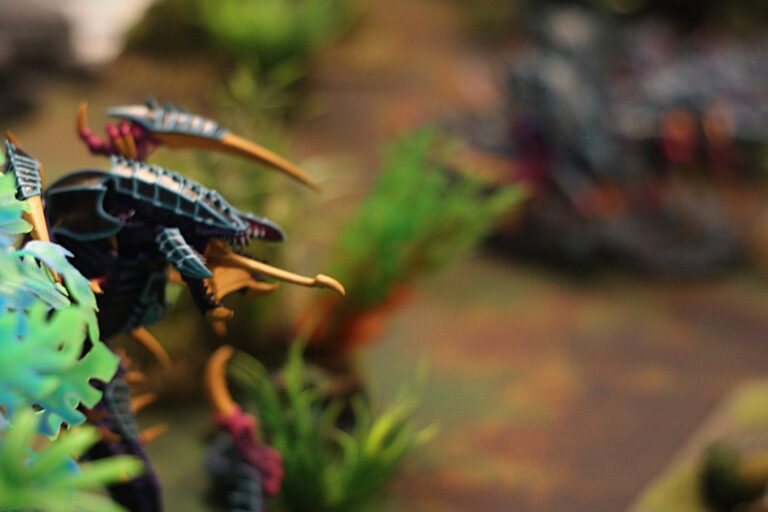
Lofty Ideals
As mentioned previously, I partnered with Jacen to run this after he organized a phenomenal gaming weekend the year before. The big focus of that event was immersion and we wanted to make that front and centre. Jacen had told me one of his few regrets from that weekend was not having everything fully painted. Though the terrain and models were probably 90% there, a few were just primed or even grey plastic. Given the massive scope of the games (3,000 points and up), this was fine, but for the ICI V, we made fully painted armies and terrain a must.
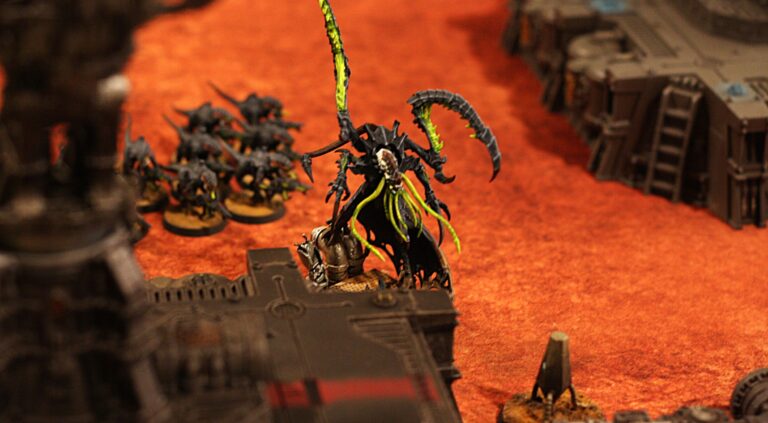
The other big goal for me was to have a story that really came through and was accessible to players. For previous events, I sometimes ran out of time to write all the backstory and a portion was left in my head, never finished for the players to read. I’m not naive enough to think all participants will read the fanfic I produce, but I at least want them to have the option to engage with a fully realised narrative.
To go hand-in-hand with this, we wanted the focus to be wholly on narrative gaming, even to go so far as to let fairness and balance fall (partially) to the wayside. At the ICI III, I’d received feedback that the missions weren’t balanced enough or thoroughly playtested* (the missions that were criticized were not my homebrews but ones published in GW’s Vigilus supplements, which raises the issue that you should always playtest missions yourself, even when they’re from official sources). For the ICI IV, I focussed on the 9th edition crusade supplements and chose missions that were much more balanced.
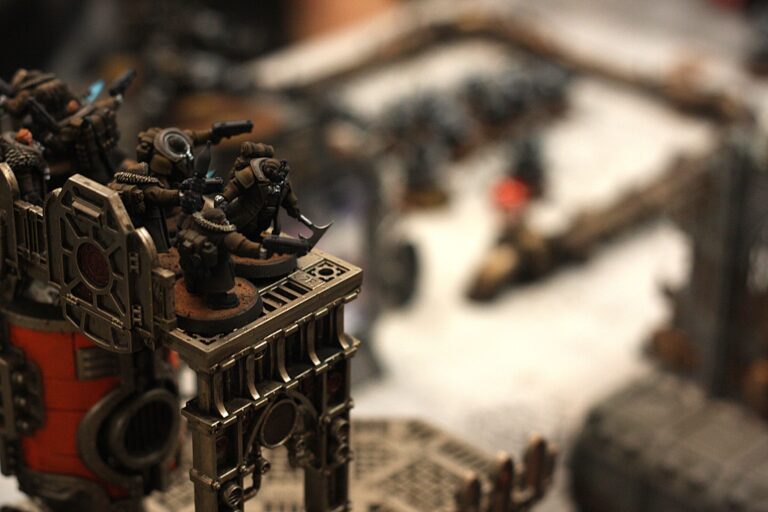
But I felt strongly that these missions, though more fair, were far less narrative. Therefore, for the ICI V, we decided to make that right. The goal wasn’t for things to be unbalanced, but that we were not going to let that stand in the way of telling a story.
The last goal was to expand the event beyond our immediate player group, while still having it an invitational. We allowed players to invite others, sort of a friends of friends situation, and also upped the player count from previous events to accommodate the newcomers.
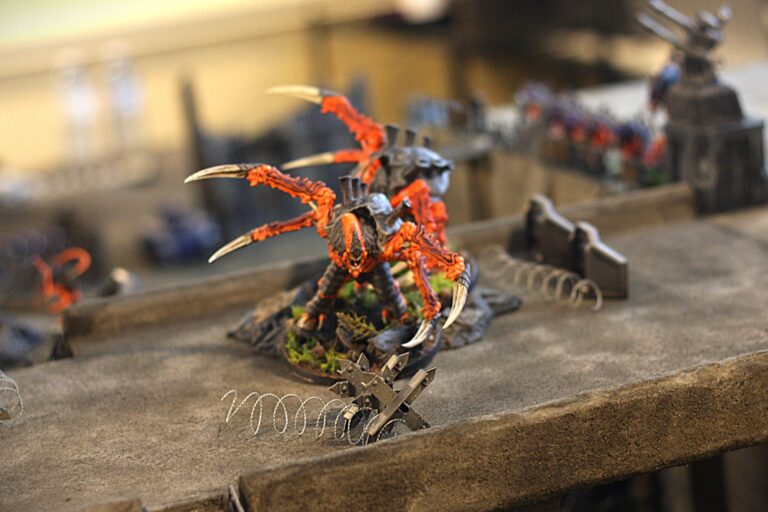
Fully Painted
When drafting initial primers and posts to players (we used Google surveys to poll players and for registration), we emphasized that the event was to be fully painted without exception. We worked on a “What to expect at the ICI” essay which hammered fully painted home and also communicated the narrative vibes. When we polled players asking who could bring terrain, we again stated we only wanted fully painted tables.
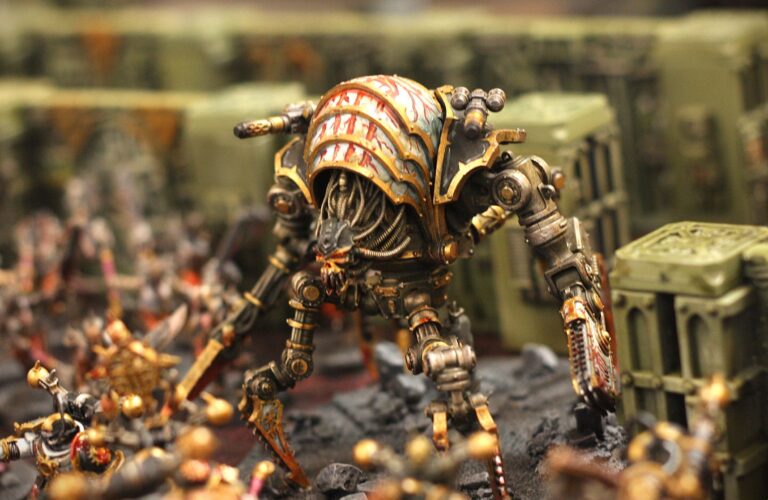
To help with this, we gave players six months’ notice of the event and lowered the armies to 1,500 points (the previous ICI required 2,500 for the finale). This would allow newer players to get up to scratch, and also left no excuse for ICI veterans, as they already had a fully painted army from the previous event (at least, we hoped they still had it).
Finally, we did regular follow-ups on Discord reminding players and pushing people to post updates.
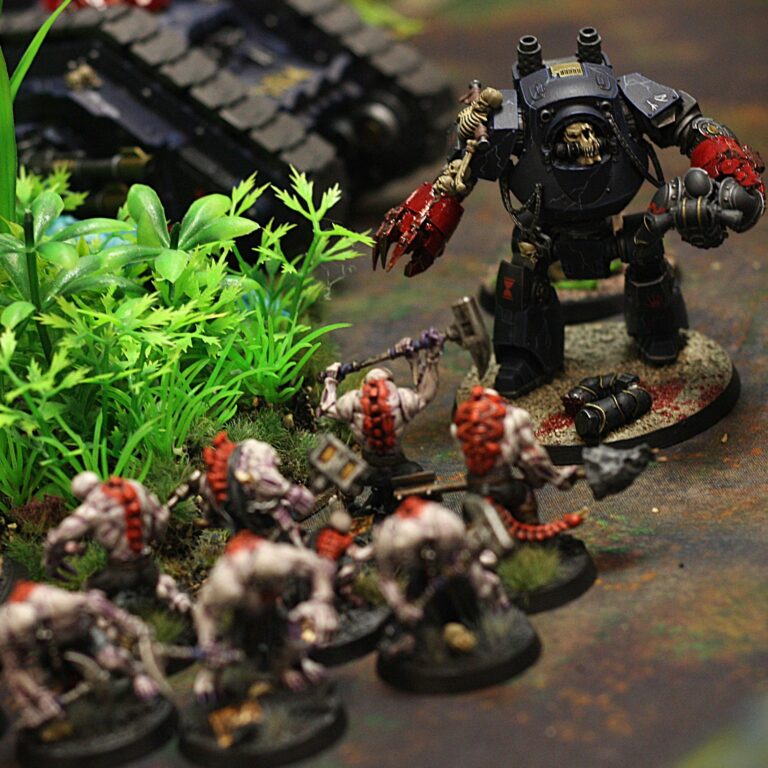
Narrative
Besides myself and Jacen, Recusant and Jeff were recruited to our committee. Jeff, being the blog’s techpriest, would help with some website integration. He also was our resident 3D printing expert and we would turn to him for the various objectives and accoutrement we needed.
Recusant was recruited to help with narrative writing, both editing my work and writing a few short stories. Taking some of the pressure off me was a godsend to getting all of the various story threads out to the players.
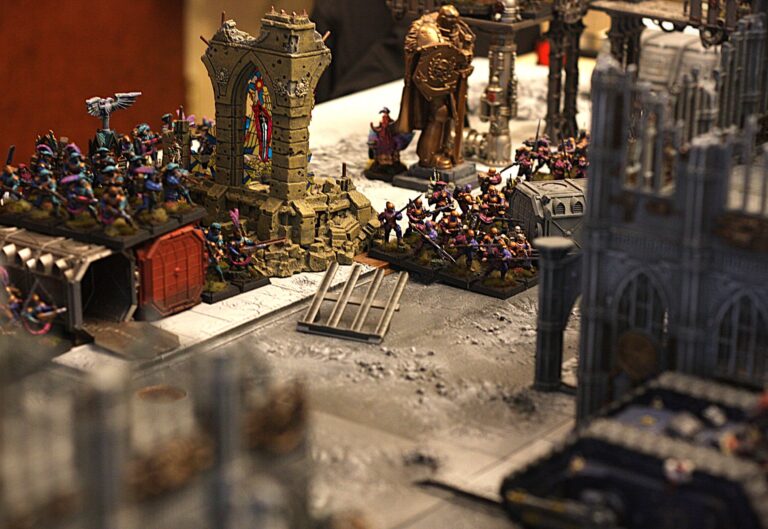
The story itself was fairly simple: armies all over the sector were being drawn to a planet in search of a McGuffin, the Apocrypha Engine. Each army had to feature a Prophet (an additional miniature each player would bring to the event) and prophecy was a major theme both in the narrative, but also the mission and campaign writing. We created the planet Exitus—Latin for “outcome,” and not to be confused with Vindicare Temple hardware—and fleshed it out (I played around a lot in Google translate to come up with location names). Exitus is a forgotten world, one which may have once been great and important but now has been passed on by the Imperium. You can read more about the story in the campaign booklet next week.
For the forces involved in the story, we waited until the players had signed up, then settled on teams. More on this later.
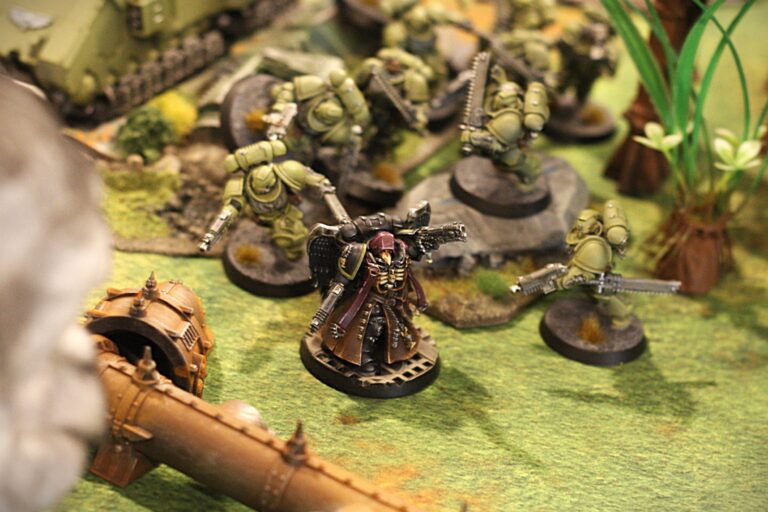
Missions and Campaign
The campaign system we used was relatively simple, but needed two prongs: the Search for the Apocrypha Engine and the Conquest of Exitus. The latter was simple: win games, score Conquest Points, conquer the planet. The Search was a bit more complicated.
We wanted the Search to be front and centre. This would be accomplished by various objectives that could be completed by players’ Prophets, much like Agendas or Secondary Objectives in Narrative and Matched Play, respectively. But the Search was definitely not “secondary” and we didn’t want players to write it off. Early on, we decided that Prophet Objectives would be listed first in all missions. Prophet Objectives scored “Prophet Points” (sometimes called “Prophecy Points”), which were tracked separately from Conquest Points.
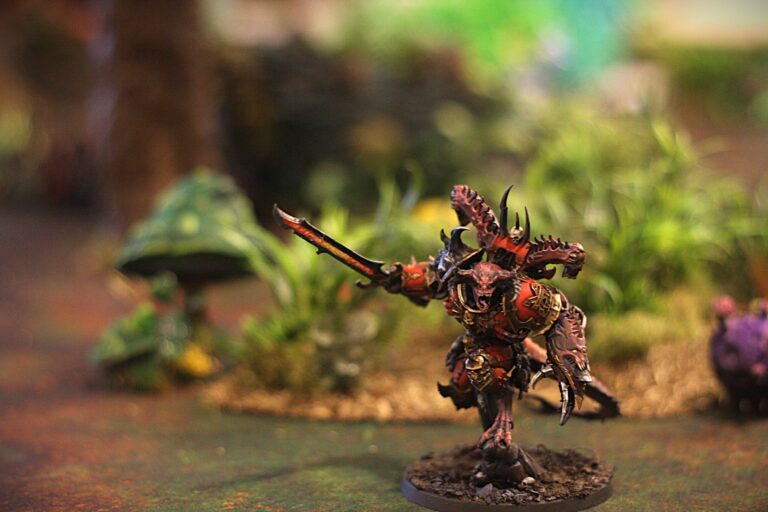
The second part of the Search was a minigame between battles. Each team would have a “spread” of tarot cards where a team could spend a Prophet Point to flip a card on their spread. Each card had a little adventure where players would select a unit and then roll to see if they gained a bonus or took a penalty. These were inspired by Kingdom Death: Monster and Blackstone Fortress event cards. Again, more on these in a future article.
For mission design, we wanted to keep these relatively straightforward as the event was geared towards newer players and players who didn’t play often. There were also weird mechanics in some, so we didn’t want to make them even more complex. Finally, since the missions were to be homebrewed, it was better to keep them simple rather than disastrously complex. We planned to playtest them too…but Real Life got in the way of that.
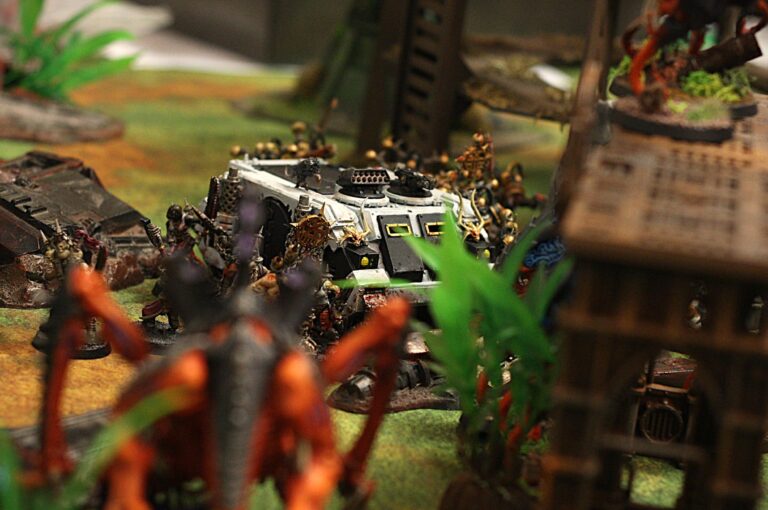
When I was preparing the missions, I was combing through crusade books. Just before I started writing them, the Beard Bunker posted a really great article on mission complexity. Immediately, I latched onto this and it was key to the design philosophy of the missions. Basically, keep it simple.
Simple deployment, objectives, and special rules were also a key part of the “balance by the wayside” approach I mentioned earlier: rather than having complicated missions that could be very unbalanced, we had simple objectives and (mostly) few special rules. The other thing we moved away from was having traditional objective markers. Rather than asking players to imagine this 40mm poker chip representing an ancient relic of power, we used a suitable miniature for the objective. In one mission, the objective is just the massive bridge and two landing pads the players are fighting over.
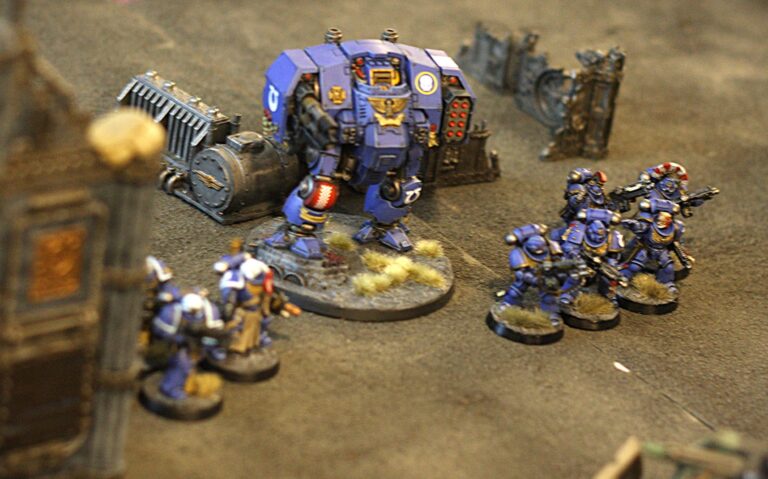
The idea here is that mission special rules can only go so far to building a narrative: at a certain point, you need visuals to back it up and build that story for players. It’s all well and good to have a mission with defensive towers shooting lasers at players, but people often forget special rules, especially when it’s just layering rules onto a marker, or a 6” circular mouse pad with an ad printed on it (these were specifically outlawed from the start). We wanted the terrain to be the star of the missions, not some special rules. And any special markers or tokens that players needed (including objective markers) would be provided for each table.
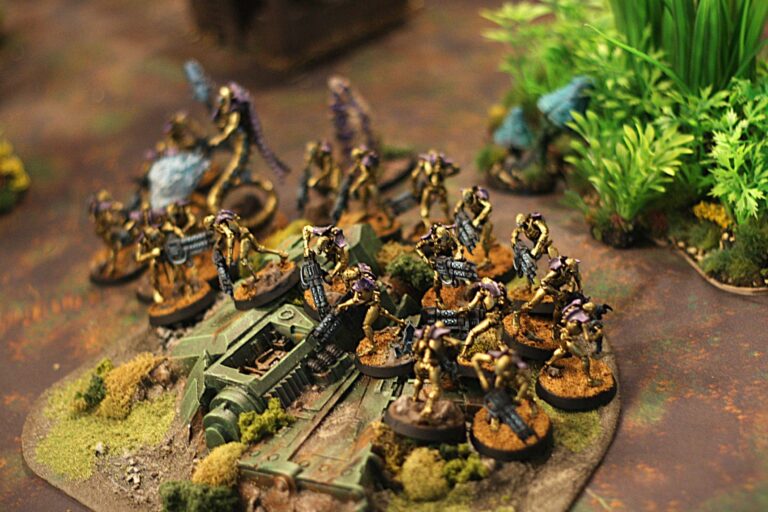
New Faces
With this event, the ICI was moving out of the basement and into a venue: we had room to add new players! Previously, only people I knew from our gaming group were invited, but this time we allowed players to also invite additional people, and we upped the available spots accordingly.
There were multiple reasons for doing this. Firstly, there is our dream of expanding narrative gaming, and one of the ways to do that is directly hosting large narrative events. One day, maybe, we’ll hold a grand 2,000 person narrative war! Or maybe not. But we’ve gotta start somewhere.

Another reason is that gaming groups are made up of people and people move, get busy, or quit the hobby. If we don’t get fresh blood into the group, it will eventually dry up and die. Also, having the same people in a group can make it insular, gatekeepy and sometimes toxic. I don’t think our group is in danger of this, but bringing in more people can be a way to keep everyone open-minded and welcoming. Toxicity in gaming groups is outside the scope of this article, and you definitely don’t want to be inviting in toxic people, but this was the general idea.
Finally, I had this idea that there were a ton of friends of previous ICI attendees who’d heard of the event and wanted to come. This turned out to be rather naive. When we opened up the additional registration, the response was fairly low. We did get some people, but we didn’t hit the 20 player limit we’d initially set, and settled on 16. This ended up working out well for team breakdown.
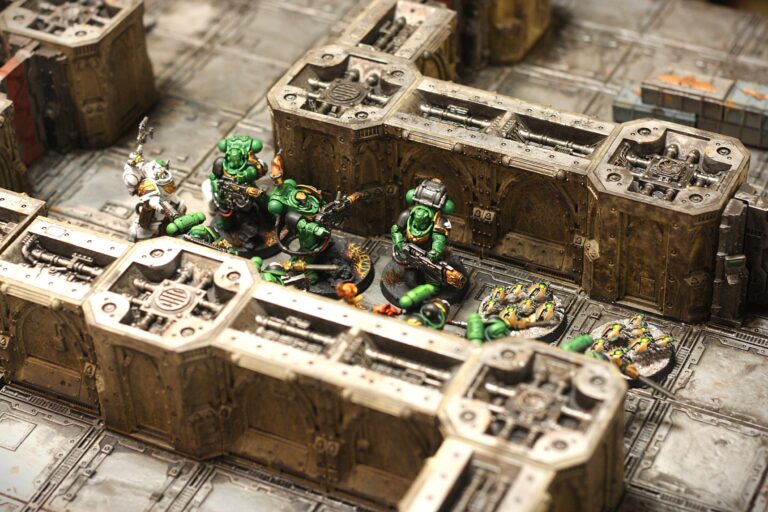
Factionalism at its finest
I’m a strong proponent of polling your players ahead of time to learn what factions they’re bringing, and building teams and the story around that. After asking players which armies they were bringing, these were what we had:
- Three Space Marine players
- Three Tyranid players
- Three Necron players
- Two World Eaters players
- Two Chaos Space Marine players
- One Genestealer Cults player
- One Leagues of Votann player
- One Imperial Guard player (whose force was themed around a Rogue Trader’s private army)
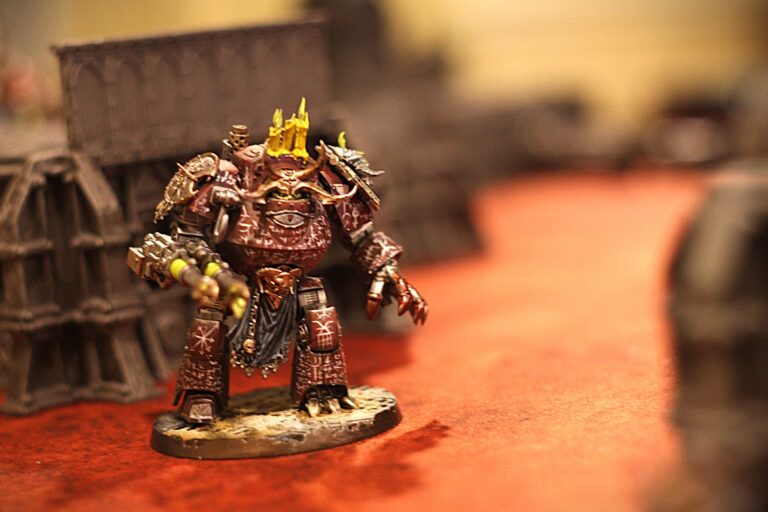
We had a few players drop and then found replacements, and a few players signed up with multiple armies allowing us to pick and build the narrative. But you can probably guess how we broke down the teams.
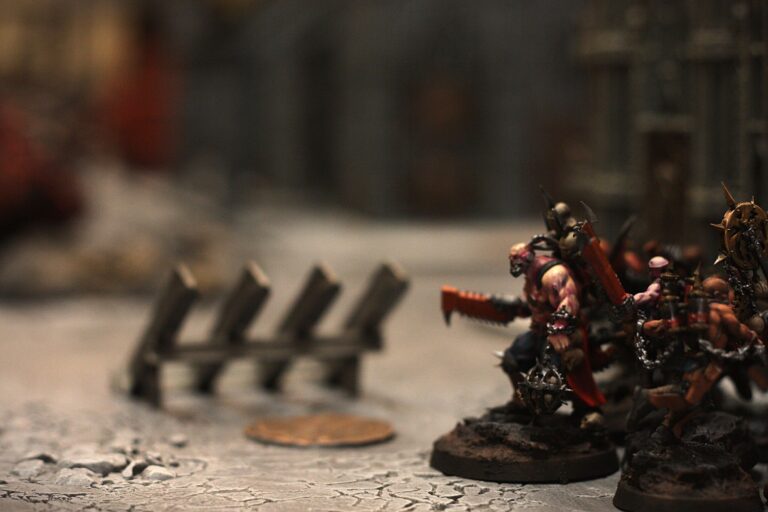
The Votann and Rogue Trader players were our “swing” players, factions that could change sides if there were last minute drops. We also tried to group players with their invitees, so that new players to the group would have a friendly face on the Discord, though sometimes the factions didn’t allow this. In the end, these were the teams:
The Prophecy of Liberation were the Tyranids and the Genestealer Cult, searching for the Apocrypha Engine as a secret conspiracy to break free of the Hive Mind and gain free will.
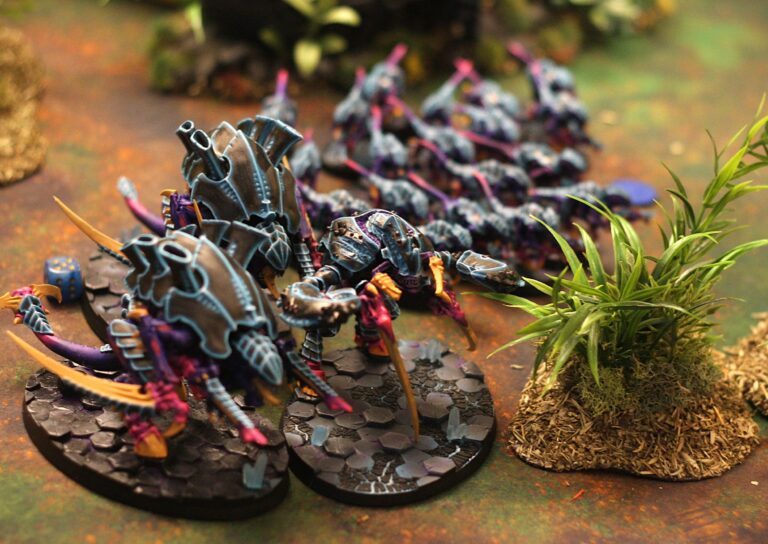
Taskforce Revelation was the trio of Space Marine chapters and a mercenary Votann army, searching for what they believed was a powerful weapon (the Salamanders player looking for what may be Vulkan’s lost “Engine of Woe”).
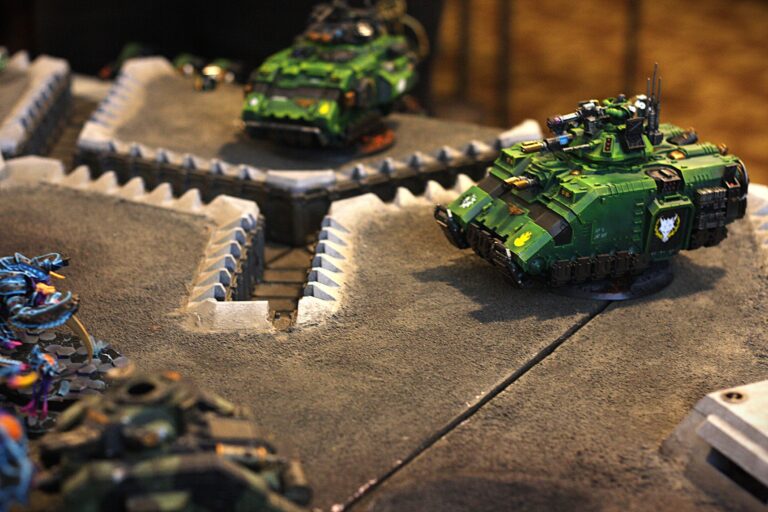
The Ascendancy of the Outsider was the Necron forces, in a very tenuous alliance (one player’s dynasty had seized control after the fallout from a previous campaign), with a mind-shackled Rogue Trader providing meat shields.
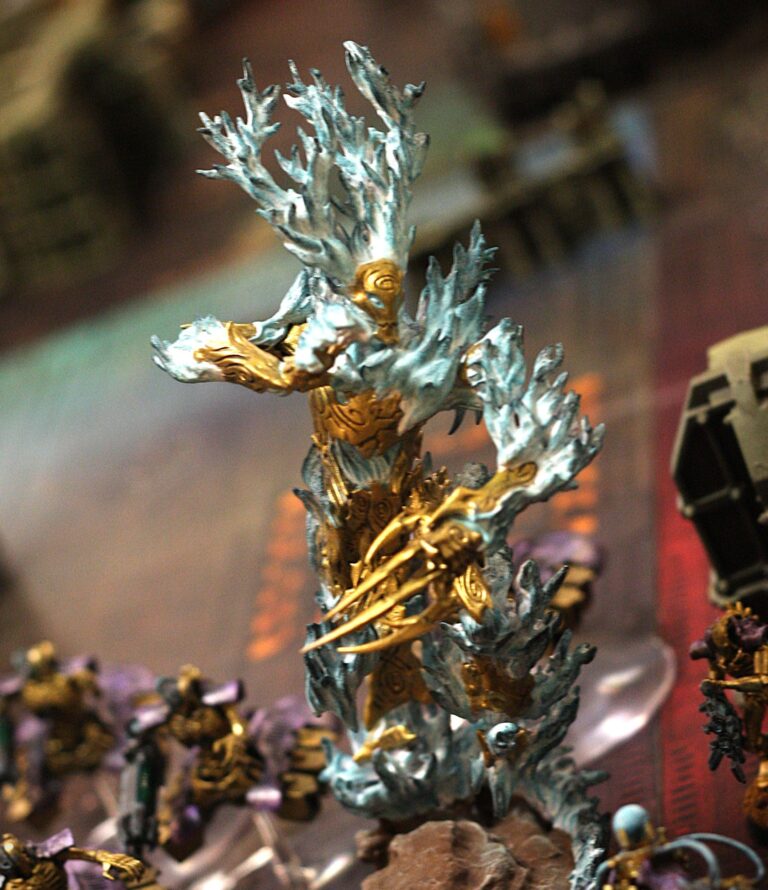
Finally, the Omens of Blood were bloody-handed Heretic Astartes with a large Khorne contingent. They came for the Engine, but stayed for the skulls.
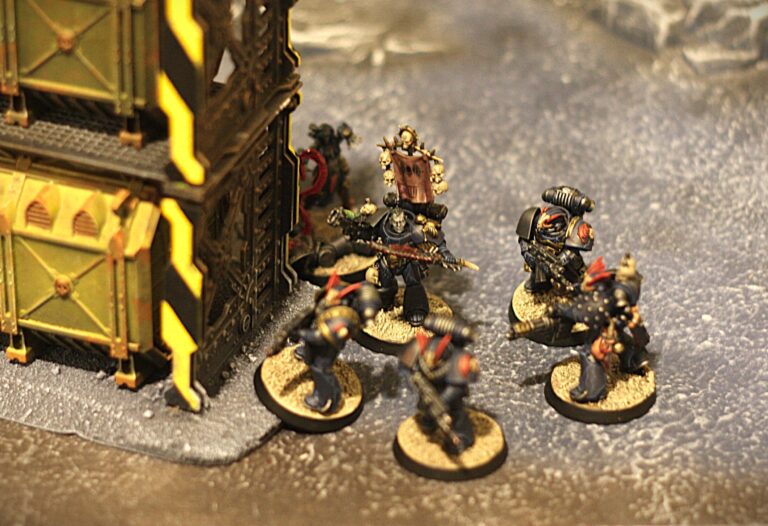
Four teams is a lot, but I really like the idea of doing more than two sides for an event. For one thing, it gives each player a larger pool of opponents to face, and also allows us to have more themed teams. The flipside is it can be easy to come up with a narrative that focuses on only two of the factions while the others are playing second fiddle to the story. As our story was about the search for a mysterious McGuffin, we could bring in almost any faction.
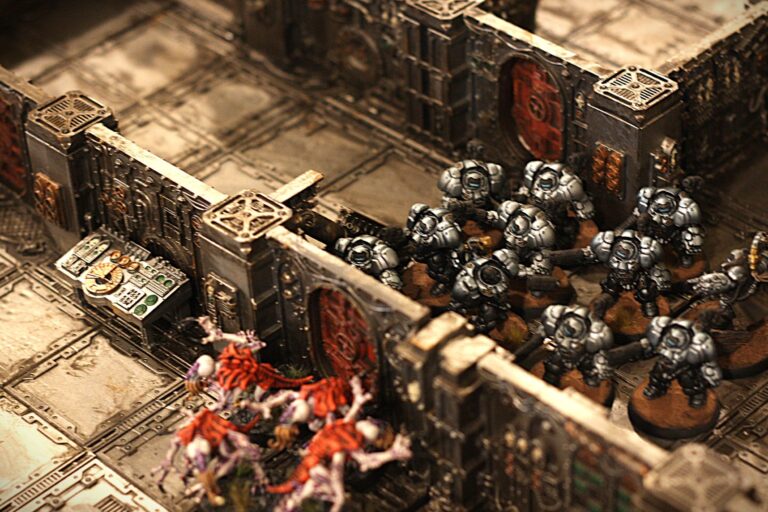
Setting the bar even higher
Fully painted. Fleshed out narrative. Custom missions. Sounds like a great event to me. But how do you ensure you don’t meet your goals? You push back the goal post.
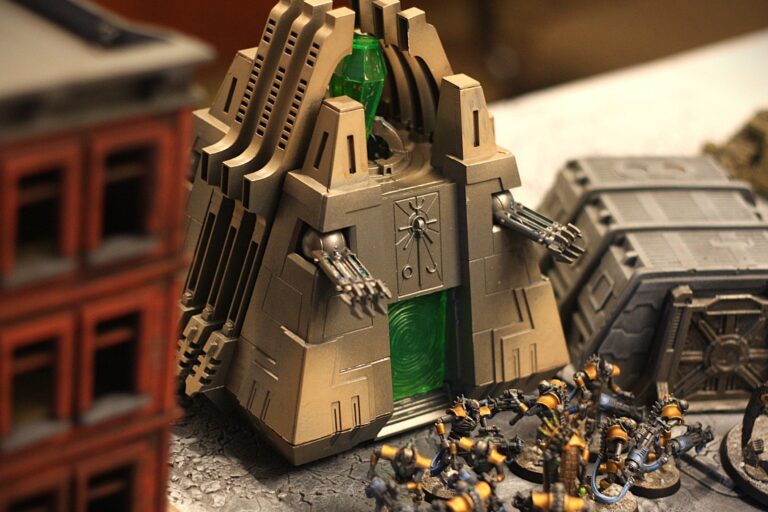
I said earlier that with previous events and campaigns, I always felt that the story was incomplete and initially my goal was simply to have the story finished for the ICI V. But then I watched this video from Arbitor Ian where he examines Warhammer as art. He looks at three definitions, the last and most important being that art is meaning, something that causes the viewer to feel something or look at the world in a fresh light. His conclusion is that Warhammer miniature painting, though technically incredible and executed with phenomenal skill, is rarely art by this definition.
I shared the video with the organizers and told them I wanted to push our envelope even further (at this point we were well into the planning stage). We already had a strong theme of prophecy for the event: could we turn that into subtext, creating commentary on the nature of wargaming in general and free will broadly?
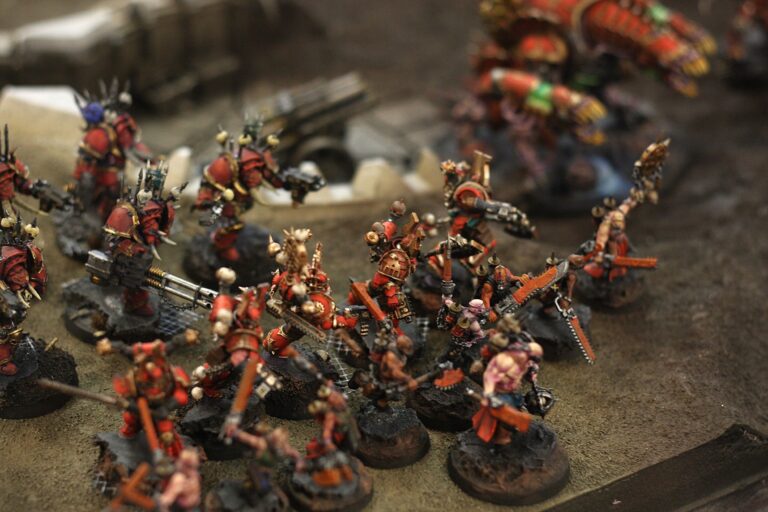
No plan survives contact with the enemy
As I said at the outset, the above didn’t come out after one planning meeting: some of these ideas and goals came together well after we started planning. What would you like to see at a narrative event, or what do you think are reasonable expectations? Drop us an email at contactus@wrongsideofthemaelstrom.com and let us know.
Next week will be a discussion of the preparations and drafting of everything leading up to the event.
Credits
Unless otherwise noted, all photos by Ian.
Raptors Space Marines by Alys.
Salamanders Space Marines by Greg.
Ultramarines Space Marines by Chris.
Leagues of Votann by Erik.
Word Bearers by Recusant.
Night Lords by Jeff.
White World Eaters by Zach C.
Red World Eaters by Tony.
Black and Green Tyranids by Mike.
Blue and Black Neon Tyranids by Kelly.
Black and Orange Tyranids by Jacen, Greg, Ian, and Elton.
Genestealer Cults by Mathias.
Rogue Trader Imperial Guard by Noah.
Purple and Gold Necrons by Zach D.
Gold, Silver and Green Necrons by Phonsy.
